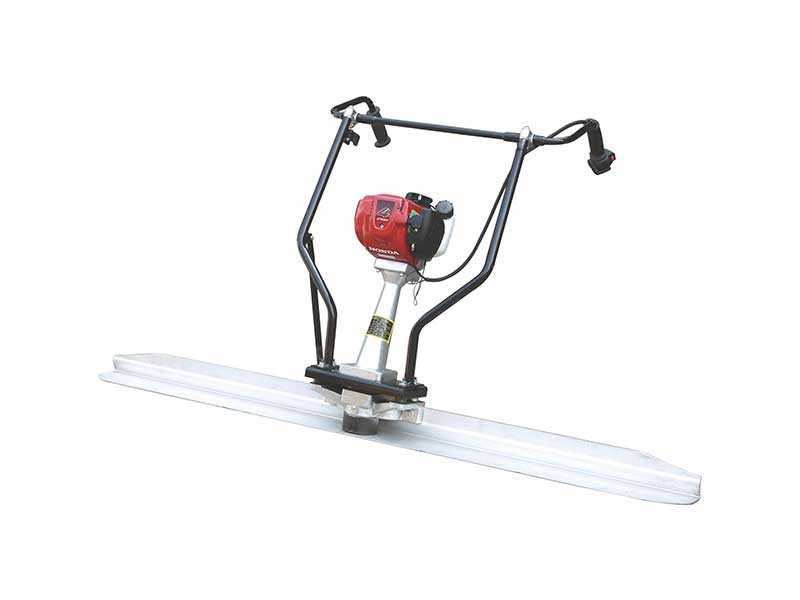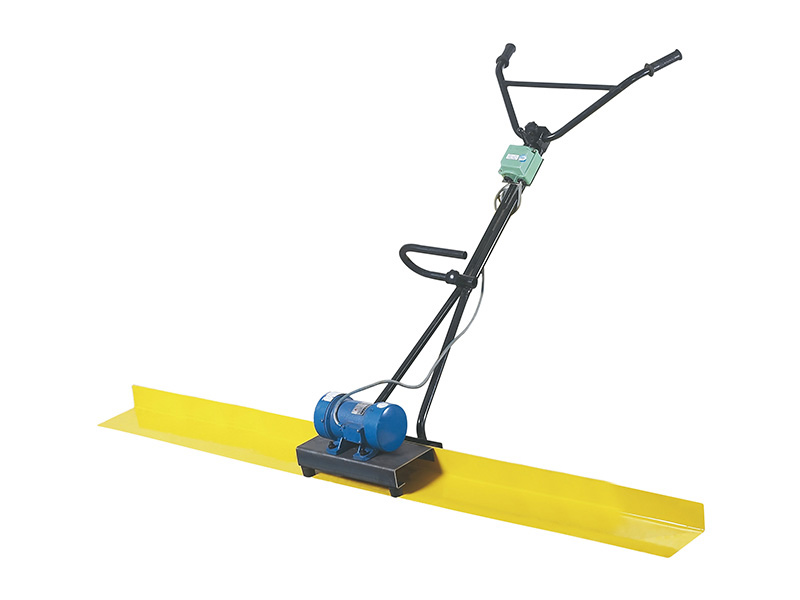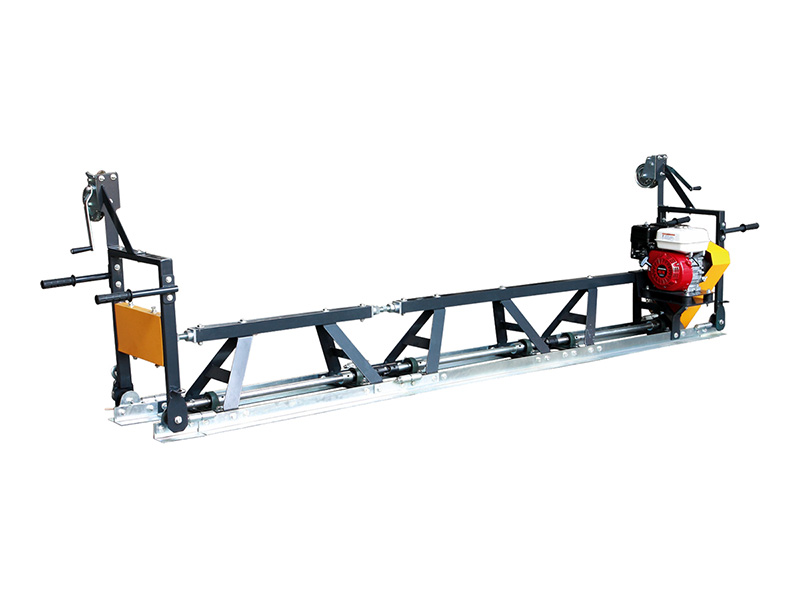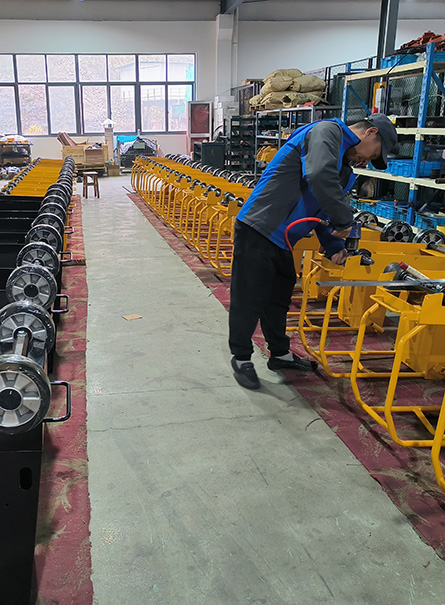HCD03 Concrete Screeds
Engine
ZONGSHENG 1.6HP Gasoline
Available Length
4ft, 6ft, 8ft, 10ft, 12ft, 14ft, or 16ft
Vibratory Frequency(times/min)
9500
HCD02 Concrete Screeds Single Aluminum Blade Bundle (Choose 4ft, 6ft, 8ft, 10ft, 12ft, 14ft, 16ft)
Engine
HONDA 1.5HP or HUASHENG 0.9HP
Available Length
4ft, 6ft, 8ft, 10ft, 12ft, 14ft, or 16ft
HCD01 Concrete Screeds Single Aluminum Blade Bundle (Choose 4ft, 6ft, 8ft, 10ft, 12ft, 14ft, 16ft)
Engine
HONDA 1.5HP or HUASHENG 0.9HP
Available Length
4ft, 6ft, 8ft, 10ft, 12ft, 14ft, or 16ft
HCD06/09/12 Concrete Finishing Screeds (Choose 2ft, 2.5ft, 5ft, 7.5ft, 10ft)
Required Power(HP)
HCD06:5.5HP Honda GX160 or Loncin
HCD09:9HP Honda GX270 or Loncin
HCD12: 13HP Honda GX390 or Loncin
Available Length
4ft, 6ft, 8ft, 10ft, 12ft, 14ft, or 16ft
The concrete screed landscape is brimming with varied options. Pondering over the ideal screed for projects like parking spaces, driveways, and interior floors? Or the most fitting screed for your company's frequent tasks? We'll delve into the strengths and weaknesses of each screed type, but let's first understand what a screed is, its function, and its necessity.
What is a Concrete Screed:
A concrete screed is essentially a straightedge device that evens out and smooths the surface of newly laid concrete. Operated by gas, electricity, hydraulics, or manually, screeds are commonly made from materials like aluminum, magnesium, steel, or wood, with some unique variations. As the screed glides over damp concrete, it compresses large aggregate particles and elevates the finer “creme” layer. This action results in a smooth, level, and flaw-free concrete surface.
Surrounding the area of concrete pouring, forms are typically employed. These forms contain the wet concrete until it sufficiently cures to stand independently. Many screeds utilize these forms (or a screed pipe) for guidance while leveling the surface of the freshly poured slab. These forms are often precisely positioned using a laser, enabling the screed to produce an accurately leveled finish at the intended height.
The Importance of Concrete Screeding:
Consider a flat concrete driveway with a broom finish and saw cuts as an illustration of how flat concrete can be with appropriate tools and methods. Screeding is vital for flatwork projects like driveways, floors, or parking lots. A diligent contractor can create robust, attractive slabs that endure for years. A screed traverses the concrete, leveling the surface. Most screeds vibrate or rotate, pushing larger aggregates down, slightly below the surface. This leaves a layer of finer sand and cream (a thin cement mixture) on top for finishers to refine into a smooth, professional appearance.
As crucial as a smooth, level surface is the foundation's smoothness and evenness. Concrete's behavior is akin to glass: it bends, flexes, freezes, and thaws. Flaws, like a scratch on glass or a chip in a windshield, can weaken the material and become focal points for breakage under stress. This is why contractors insert control joints in concrete, aiming to direct where a crack might form. If the underlying subgrade is uneven, with high and low areas, it introduces vulnerabilities on the slab's underside, potentially affecting the contractor's control over potential cracking locations.
What is a Slump Test and How Does H2O Quantity Impact Cement?
A crucial determinant in the robustness and endurance of a cement slab is its slump level during pouring. A cement slump test gauges the amount of H2O in unhardened cement, assessing the water to other components ratio – aggregates and cement. A modest slump indicates reduced H2O content, while a hefty slump suggests increased H2O presence.
Cement, with a humble slump score, signifies limited H2O content, is dispensed from a chute of a cement mixer. The H2O quantity in cement at pouring time crucially influences its strength. More H2O (or lofty slump) during pouring equates to feeble hardened cement. Although H2O is vital for curing, its excess can be damaging.
Enhancing H2O in cement mix waters down the concoction, leading to a more shrinkage-prone hardened cement. As H2O in the blend evaporates, it rises to the surface, pushed up by the cement's weight. The trails formed by escaping H2O are minuscule fissures in the slab, becoming potential weaknesses. Over time, these may evolve into significant fractures due to settling and freeze-thaw cycles.
A cement worker utilizes a come-along to smooth cement in flatwork tasks before screeding. Research by the University of Illinois' Department of Materials Science and Engineering highlights that excess H2O weakens cement, while insufficient amounts render it unmanageable. Contractors face a daily dilemma: more fluid cement is simpler to deploy. Thus, they often opt for convenience, compromising the slab's strength and durability. Pouring at a lofty slump doesn't just undermine the slab's structure; it can also tarnish a contractor's reputation and future business prospects.
What are the Assorted Varieties of Cement Screeds?
Concrete artisans must judiciously select the optimal screed variant for their enterprise or specific pour. The market is awash with diverse screed types, each with its unique niche. Let's delve into these varieties.
Laser-Guided Screeds
Ideal for tasks demanding elevated flatness standards, laser-guided screeds, akin to a laser-steered limb on a compact apparatus, enable precision leveling of concrete with minimal manpower. Teams prep the concrete somewhat grade-adjacent, and laser-guided screeds fine-tune to an exact grade thereafter.
However, laser-guided screeds come with drawbacks. Firstly, their exorbitant cost ranges from $100,000 to $250,000. Secondly, the broadest laser-guided screeds cap at approximately 20 feet in width, with none apt for base grading.
Considering their hefty price, acquiring a pre-owned laser-guided screed might be a sensible initiation. Always inspect used models thoroughly, as repair costs can be steep, and skilled repairers are scarce. Also, breakdowns tend to occur on pour days, not during idle periods, risking pour loss if the equipment fails.
Despite their labor-saving and precision benefits, laser-guided screeds' prohibitive cost leads many contractors to rent rather than own.
Truss Screeds / A-Frame Screeds
Able to pour concrete up to 60+ feet wide, truss or A-frame screeds can handle substantial volumes, given sufficient crew size. Typically gas-powered, they're hauled by a winch at each end.
Truss screeds are cumbersome and labor-intensive in setup, teardown, and cleaning. They operate slowly, and correcting uneven pours is challenging, often requiring manual adjustments.
Truss screeds necessitate a labor-intensive approach, with each laborer having varying perceptions of the ideal concrete height, leading to inconsistencies. This disparity can result in concrete displacement, affecting the level behind the screed, potentially creating undulations that are difficult to correct without re-screeding.
A crew employing a truss screed, also known as an A-frame screed, finds it laborious but effective for large flat projects like driveways and parking lots.
Roller Screeds / Spinning Screeds
Roller or spinning screeds are suited for compact areas. Comprising a rotating metal tube, they perform adequately on smaller pours and can adapt to steep slopes or gutter shapes.
Operated by two laborers, roller screeds demand intensive physical effort, especially for large pours or low-slump concrete. They depend on manual force for leveling.
When concrete is too high or low-slump, roller screeds may displace it, necessitating a re-screed to smooth out irregularities. Despite their ability to generate a smooth surface, they lack vibration, crucial for settling aggregate and ensuring proper consolidation.
Lightweight and budget-friendly, roller screeds are practical for tight spaces and small pours, but they require significant manual labor.
Stand-up screeds, excellent for very small pours and confined spaces, typically consist of a vibrating bar operated by a single person, supported by a team raking the concrete. While affordable and widely available, these screeds are limited in terms of width, slope, slump, and speed, and still demand considerable physical effort.
A contractor using a vibra strike screed highlights its utility in small-scale, vibratory concrete leveling tasks.
Screed Boards
The simplest and most economical choice for screeding concrete is the trusty screed board. Typically a straight 2×4, it's used by two people in a sawing motion while applying forward pressure.
Screed boards are effective for small, narrow flatwork but are laborious for larger projects. The physical strain of bending, sawing, and pulling simultaneously can be challenging for even the most robust finishers.
What's a Shared Trait Among Superior Concrete Screeds?
A universal hallmark of top-tier screeds is their proficiency in task execution, contingent on meticulous maintenance. Any screed marred by warps, indentations, residual hardened concrete, or subpar operation will falter in performance, a flaw manifestly evident in the final concrete product. Ensuring screeds are diligently preserved and remain in prime functional state is crucial. If your worn-out screed lacks speed, user-friendliness, or fails to yield an exquisite, professional finish, then pondering an upgrade in your arsenal might be wise. Ultimately, delivering a premium end result is paramount for client satisfaction.






